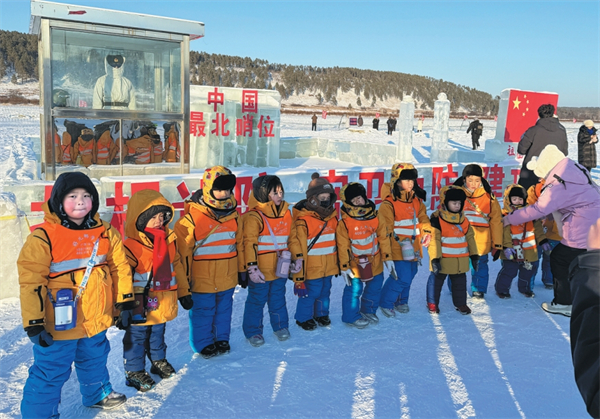Home>Biz updates
China's heavy industry hub targets slower economy growth
Updated : 2015-01-31
By ( Xinhua )
China's northeastern provinces have lowered their economic expansion targets after industry-driven provinces saw much-lower-than-expected growth in 2014.
In Heilongjiang, GDP growth stayed at 5.6 percent, 2.9 percentage points below target and well behind the 8.0 percent seen in 2013, according to the figures released at the ongoing annual legislative session of the province.
Governor Lu Hao blamed unbalanced industrial structuring for the slower growth, saying transformation is a must in 2015.
Lu said in the government work report that industry contributed more than 50 percent of the economic growth for the province, especially the energy industry, which accounted for 50 to 70 percent of the entire industry sector. The growth rate in the industrial sector stood at 2.8 percent in 2014, 4.5 percentage points lower than the national level, according to the report released on Tuesday.
Affected by the international oil price slump and industrial overcapacity, the energy industry in Heilongjiang saw negative growth last year, Lu said, without giving exact figures.
The situation is expected to continue in 2015, with Daqing, one of China's largest oilfield located in Heilongjiang and a major hub for the energy industry, planning to reduce petroleum output by 1.5 million tonnes annually from 40 million tons in 2014 to 32 million tons in 2020.
A similar situation happened in Liaoning province, which reported 5.8 percent of economy growth last year.
Both of the provinces set the GDP growth target at 6 percent in 2015, the lowest annual target for the provinces over the past decade.
Northeast China, consisting of Liaoning, Jilin and Heilongjiang provinces and part of Inner Mongolia autonomous region, is the country's traditional industrial base. The region's industries include steel, automobile, shipbuilding, aircraft manufacturing, and petroleum refining.
Since 2003, when China launched a strategy to revive the northeastern industrial region, the provinces saw double-digit economy growth until 2012 and 2013, when the region faced shrinking resources and industrial overcapacity amid global economic slowdown.
"The slower growth was seemingly caused by lower market demand and weaker investment, but substantially, it was in fact an outbreak for unbalanced industrial and economic structure," said governor Wang Xi of Liaoning province.
Wang Li, chairman of the Liaoning Beipiao Coal Corporation Ltd, said rapid economic growth over the past years led to serious overcapacity in sectors of steel, coal, electricity and coke. As many as 100 coal mines were forced to shut down last year in the city of Beipiao alone.
"We have to seek transformation and find a way of innovation if we want to survive," Wang said.
Experts believe the slower economic growth faced by the northeastern region is a manifestation for the entire country, which is facing a "new normal" status for the economic development.
Instead of this "old normal" economic growth featuring high speed and excessive reliance on investment, export and resources, the world's second largest economy is striving to shift gears to adapt to the "new normal" of slower speed, higher quality and more innovation.
"The year of 2015 is a critical year for China's comprehensively deepening reform, and local governments should lower their economy growth target to leave space for structural transformation and further reform," said Qi Yingfei, a professor on economics with the Dongbei University of Finance and Economics.

Harbin ramps up childcare services
A new comprehensive service center for childcare in Harbin is expected to be finished by the end of the year.
-
Talent policies drive enterprise development in Harbin
Harbin's "30 New Talent Policies" represents an iterative upgrade to the talent policy system, helping attract and retain talent to bolster economic and social development.
-
Official website of 2025 Asian Winter Games goes live
Harbin, the host city of the 9th Asian Winter Games, has announced that the official website for the 2025 event has recently gone live.
-
Harbin launches measures to facilitate more foreign trade
In the first three quarters of 2023, the total import and export value of Heilongjiang province's goods trade hit 218.22 billion yuan.





